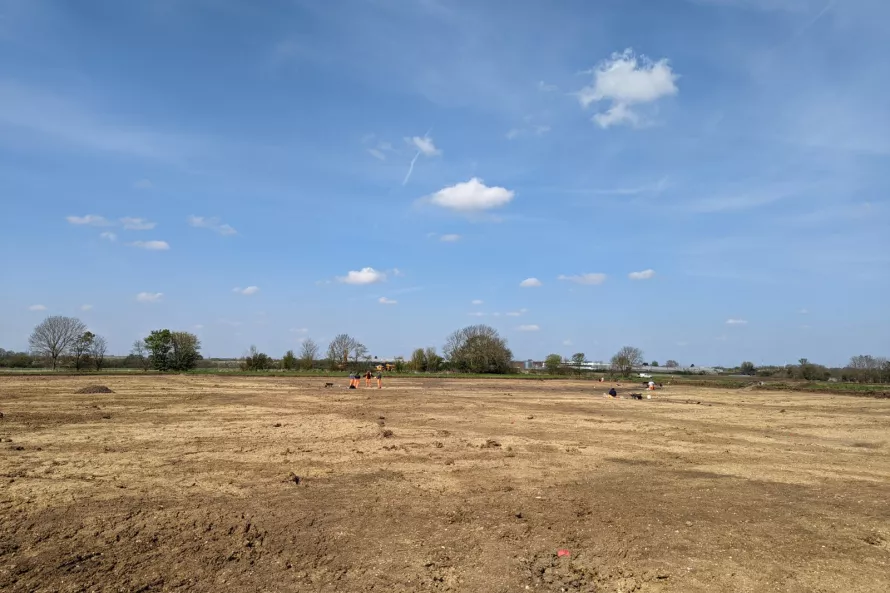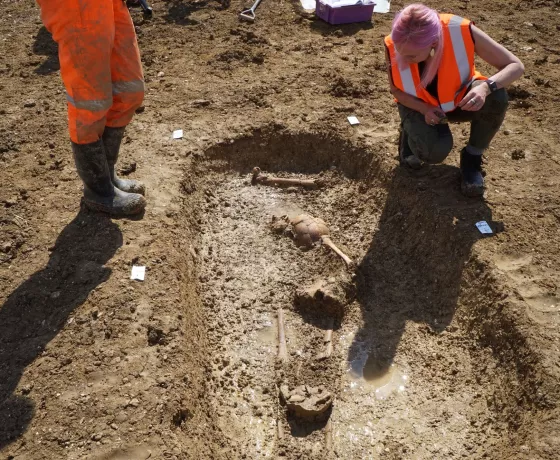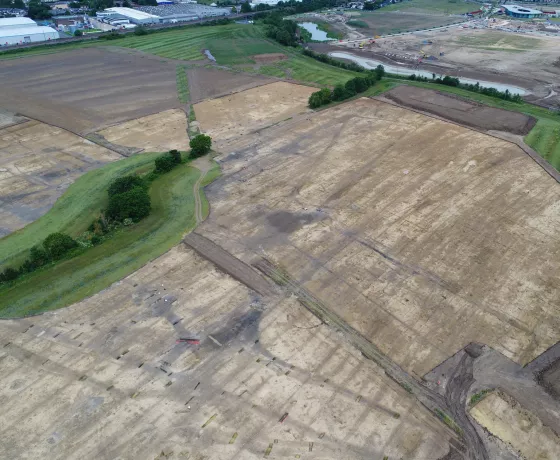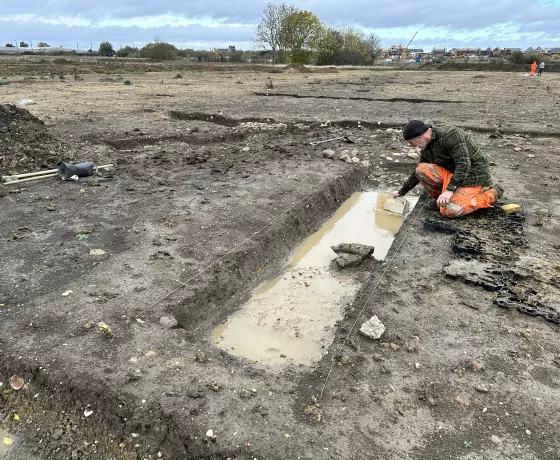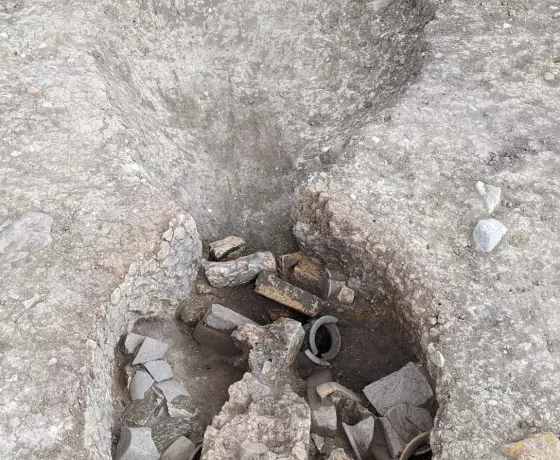Over the last couple of weeks, the team at Wintringham have been battling with the hot weather. This has meant that the dry clayey soil has been tough to excavate, requiring mattocks and brute force. Nevertheless, armed with extra water, sunscreen and wide-brimmed hats, the team are making good progress in the top area where the maze of large and small Roman enclosure ditches and laid surfaces are proving a tricky task to comprehend.
This is mainly because this area of the settlement has been obscured by the gradual accumulation of sediment. We call this archaeological 'fill', filling in holes in the ground left by earlier human activity and and concealing them. It can require some educated guesswork as to where best to dig!
There are many ways in which these deposits are created; from natural silting or standing water, or from livestock churning the ground. We can see that in some areas these deposits are intentional, with stones laid down to form a surface to make the ground less boggy and make it easier for livestock or people to move around. A large number of Roman iron nails was found within one of these stoney deposits, perhaps the only remaining evidence of a timber structure that could have once provided shelter or storage.
Some of the interesting stony deposits found to be covering the ditches in the top area.
These deposits have proven to be a perplexing challenge for our supervisor Emily who has been trying to figure out the 'phasing' of this area – what happened first, and what came after. But - we think we finally have some possible answers (until we find something else that flips our interpretation on its head, as is often the case with archaeology!) It appears that we have a series of ditches running North/South that inter-cut each other, but largely follow the same direction. We suspect that this was a fairly established boundary at the edge of the settlement that is being repeatedly dug over a longer period of time. What they are separating, or keeping in (or out), we don’t yet know. We do know that one of the earliest ditches forms an enclosure which is possibly late Iron Age. Perhaps this was a particularly dry area for keeping livestock during the winter months? Or maybe it was a suitable area with good drainage for growing crops? Any artefacts found in the ditches along with soil samples will hopefully paint a clearer picture of what was happening in this area, but that will have to wait until we finish the excavation and get stuck into the post-excavation analysis.
An excavation slot dug through one of the areas of confusing dark deposits, revealing ditches underneath that run in the same alignment.
Other posts in this collection
Read our latest posts about the archaeological investigations at Wintringham.

